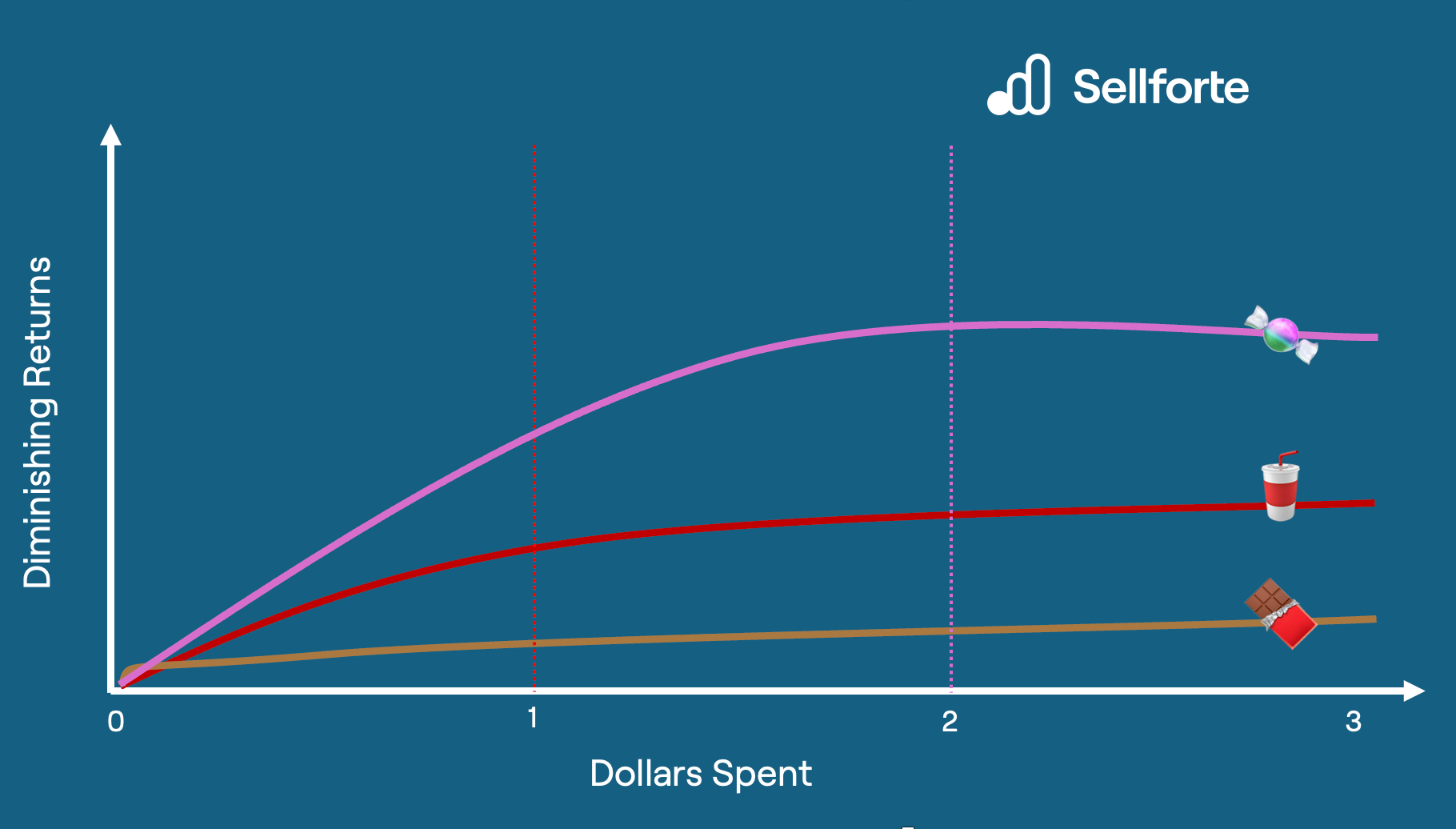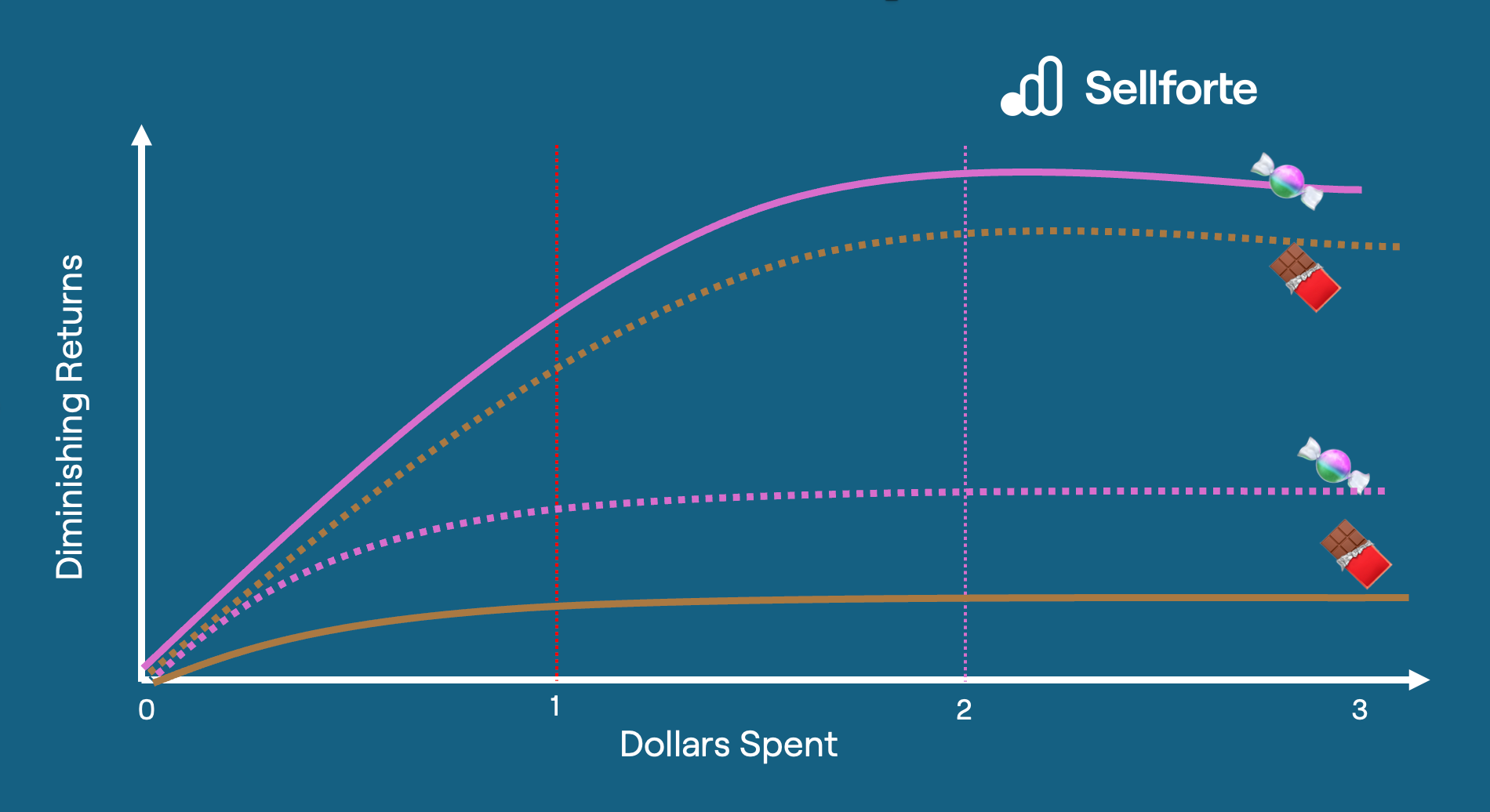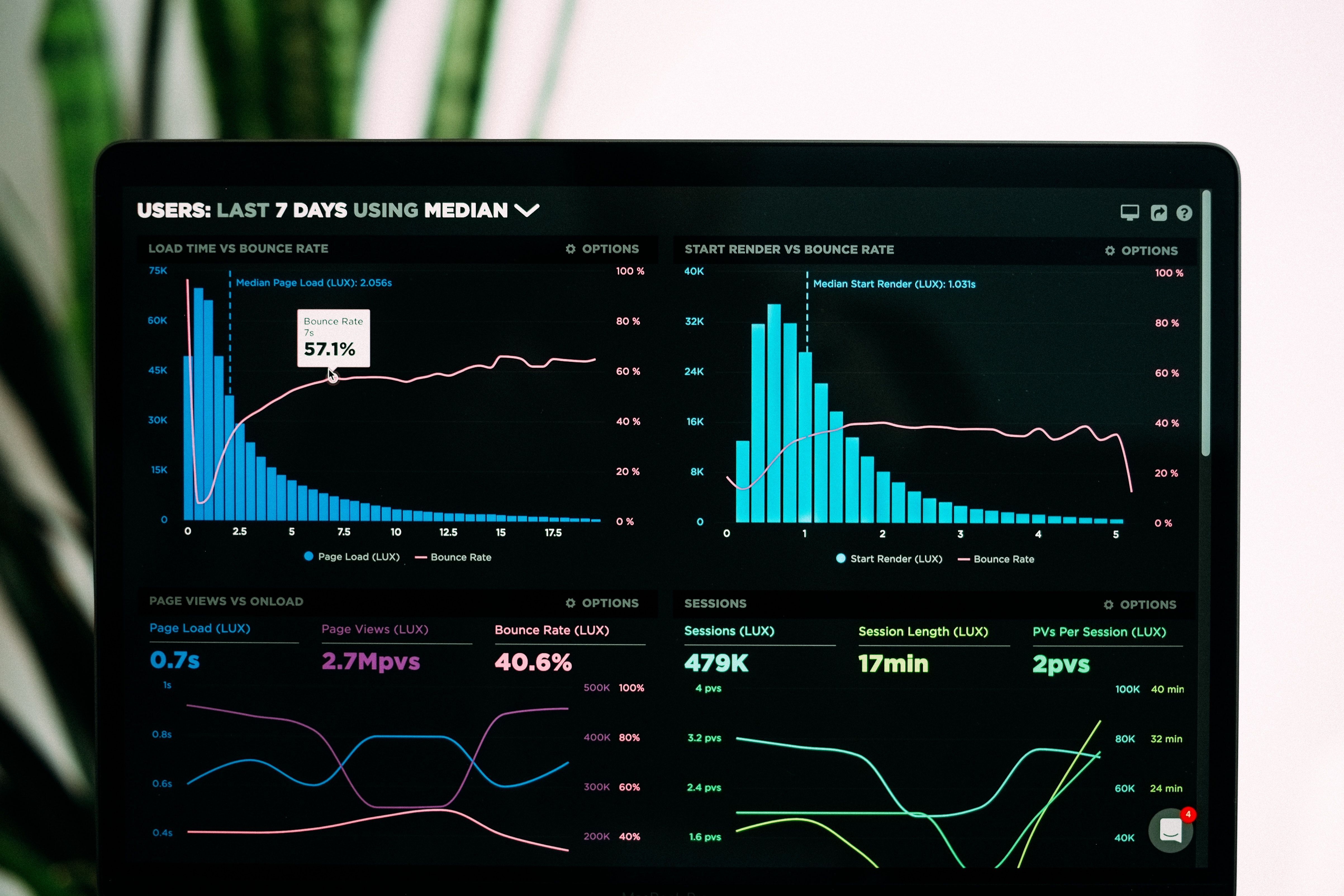How Customer Split in MMM Drives Growth and Marketing Efficiency
Are you prioritizing growth or efficiency when making decisions about the upcoming campaigns and budgets? What if you didn’t have to choose between the two?
Whether you’re a startup or a global brand, your marketing optimization initiatives are typically driven by two fundamental goals: growth and efficiency.
Think of your marketing machine as a bodybuilder. You want to get bigger (growth) and leaner (efficiency), but it's tough to achieve both at the same time because they often require different approaches.
- When you're focused on growth, your best bet is to invest in customer acquisition, which is about expanding your reach and winning over new customers. You can also drive up the Average Order Value (AOV) and thus the Customer Lifetime Value (CLV), but in most cases revenue grows the most with new customers.
- With global competition fiercer than ever, brands today are not just fighting for market share but they’re fighting for attention, engagement, and loyalty. Therefore, to succeed, companies must implement a blend of push and pull tactics in an experimental way to reach new audiences, which often introduces inefficiencies along the way.
- Pushing your marketing machine to get leaner means reaching certain ROMI/ROAS levels throughout the whole media mix, and this typically includes budget reallocation and/or cuts. Cutting the budget without a clear understanding of its link with revenue & profit, however, can be a dangerous thing for growth.
- Reducing inefficient spend is getting more and more difficult as traditional attribution tools are losing their accuracy. This has led to a chronic "spending disorder", where companies overinvest in conversion channels and neglect the other mediums.
This is why the typical roadmap starts with prioritizing growth and moves to streamlining activities after the growth trend hits a performance plateau (or external turbulence).
But what if there would be a way to pursue both activities simultaneously?
Striking the balance
Most companies start by prioritizing growth and later streamline their activities once they’ve hit a performance plateau or external turbulence forces a change. But what if you could pursue both growth and efficiency at the same time?
Just like bodybuilding, getting bigger and leaner simultaneously is challenging—especially when looking at things from an aggregated level. Aggregated results often make it hard to figure out where to allocate your budget for maximum impact.
Let’s look at the challenge through an example!
Jack opens a “sweet stand”, selling candy, soda and chocolate.
To boost his sales, Jack decides to use his $3 weekly allowance to promote the items in a local newspaper.
Jack uses Marketing Mix Modeling (MMM) to analyze his spending options, plotting diminishing return curves for three items: candy, chocolate, and soda...
 Statistical analysis reveals that the marginal ROI for candy saturates after $2 (you start to feel ill if you eat too much candy!), so it makes more sense for Jack to spend the last dollar on soda.
Statistical analysis reveals that the marginal ROI for candy saturates after $2 (you start to feel ill if you eat too much candy!), so it makes more sense for Jack to spend the last dollar on soda.The sweet spot (pun intended) seems to be at the point where Jack spends $2 to promote the candy and $1 to soda drinks.
But this isn’t where the story ends. Growth and efficiency aren’t just abstract concepts—they directly tie into the behaviors of new and returning customers. Acquiring new customers typically requires a more aggressive spend, often involving higher-cost channels like paid media, social ads, or influencer marketing. On the other hand, retaining existing customers is generally more cost-efficient, as these customers already have a relationship with your brand. Channels such as email marketing, loyalty programs, and re-marketing often yield higher returns for this segment at a lower cost.
If you split the MMM results between new customer acquisition and returning customer retention, you gain deeper insights into how different media investments perform across these two groups. For example, you might discover that a particular media channel drives high ROI for new customers but tapers off when targeting existing ones, or vice versa.
This distinction allows you to take a more targeted approach to marketing spend. If your goal is to grow your customer base, you may choose to prioritize channels that deliver strong returns for new customers. Conversely, if your goal is to improve efficiency, you may focus on optimizing investments toward retaining and engaging your existing customer base.
Jack’s Sweet Stand Revisited
After digging deeper, Jack realizes his customers have different preferences, and he decides to run MMM separately for new and returning customers. This allows him to split his spending more wisely.
- For new customers, Jack spends more on high-impact items like candy.
- For returning customers, Jack focuses on chocolate, which provides steady returns at a lower cost.
Jack notices a key difference: attracting new customers often requires more upfront spending. This is similar to how, in the marketing world, acquiring new customers involves more costly investments in channels like social media ads, influencer partnerships, and paid search. These methods create excitement and bring new customers to Jack’s stand—just like how candy creates immediate satisfaction for new customers.

The graph above visualizes the diminishing returns for Jack’s new and returning customers based on his spending:
- Dashed lines represent new customers, where spending more on candy brings higher returns.
- Full lines represent returning customers, where chocolate provides steady satisfaction at a lower cost.
Jack sees that chocolate generates revenue from new customers while candy helps keep his existing customers happy, so he adjusts his budget to invest $2 in chocolate and $1 in candy for optimal results.
This adjustment mirrors how a business should continuously measure and re-allocate its marketing spend as customer behaviors shift. For Jack, as his customer base grows, the sweet spot for maximizing returns moves from candy to chocolate.
Candy for New Customers: Jack finds that spending more on candy yields high returns, much like how businesses investing in paid media see quick gains in new customer acquisition. However, after a certain point, the more he spends on candy, the less additional satisfaction it brings—a clear case of diminishing returns.
On the other hand, Jack’s returning customers are already familiar with his stand. He doesn’t need to impress them with high-cost items anymore. They just want something reliable and enjoyable, much like how businesses use cost-effective channels like email marketing and loyalty programs to maintain relationships with existing customers. These channels allow you to retain customer loyalty and increase lifetime value (CLV) without overspending.
Chocolate for Returning Customers: Jack realizes that while chocolate may not have the immediate draw that candy has for new customers, it provides steady satisfaction for his returning customers at a lower cost. Similarly, investing in retention-focused channels provides steady engagement without requiring large additional spend.
Continuous Measurement & New Channels
Finally, Jack considers how adding new products—or in marketing terms, new channels—could change his strategy. He starts thinking about offering soda again or experimenting with something entirely new to attract fresh customers while keeping his loyal ones happy.
Jack learns an important lesson: continuous measurement is key. Just like MMM, new channels can provide fresh opportunities for growth, but their impact must be carefully evaluated to determine how much to invest and where to scale back.
In Jack’s case, the optimal spending points might shift to $2 on chocolate for new customers, $1.5 on candy for returning customers, and $1 on soda to test a new channel.

Here, Jack learns an important lesson about continuous measurement. Just as MMM, new channels can provide fresh opportunities for growth, but their impact needs to be carefully evaluated to determine how much to invest and where to scale back. The optimal spending points according to the graph would be $2 on chocolate for new customers and business growth, $1.5 on candy for returning customers in order to maintain and engange the existing customer base, and $1 on soda to test the new channel.
Splitting MMM Results for New vs. Returning Customers
When it comes to balancing growth and efficiency, you need a more nuanced approach than simply looking at aggregate marketing spend. Here’s where things get interesting: splitting your MMM results between New Demand Revenue (new customers) and Existing Customer Revenue (returning customers) can provide critical insights.
Typically, we run the MMM model separately for new vs. returning customers to understand the difference in effectiveness between the two. This way we can get a clearer picture of what drives growth and what optimizes efficiency. As mentioned previously, acquiring new customers might necessitate heavier investments in awareness campaigns, while retaining existing customers is often more cost-efficient, with pull tactics like email marketing, loyalty programs, or retargeting offering better ROI.
This segmentation helps avoid a one-size-fits-all solutions and makes sure that your marketing investments are more tailored to each customer segment’s specific needs and behaviors. Once we run the models and obtain the results for both customer groups, we merge them together for a holistic view of how your media investments are performing across both new and returning customers. This insight is crucial because it allows you to fine-tune your strategy based on your current business goals—whether you're focusing on growth, efficiency, or a strategic balance of both.
Why This Matters?
While it’s important to start with analyzing your historical marketing effectiveness and optimizing your budget allocation for growth or efficiency, at some point, you’ll want to try achieving both. This requires finding the elusive Pareto point, where you maximize both effectiveness (growth) and efficiency (cost optimization).
There is no one-size-fits-all solution here. The balance between growth and efficiency is fluid and changes based on the competitive landscape, economic factors, and evolving consumer behaviors. This is why investing in a continuously updated MMM solution is crucial—it equips you with the tools necessary to navigate this ever-shifting landscape.
There is no fixed formula for this, as the balance between new and returning customer investments shifts with market conditions, customer behavior, and business priorities. This is why investing in a dynamic and continuously updated MMM solution is essential—it gives you the flexibility to adjust your strategies in real time. Therefore, you can maintain a balance between building your customer base and maximizing the value of your existing customers.
Curious to learn more? Book a demo.
You May Also Like
These Related Stories

Measure Marketing ROI both online and offline
.png?width=900&height=509&name=Promo%20blog%20(1).png)
The Missing 24%: Why MMM Without Promotions Behaves Like Last-Click


